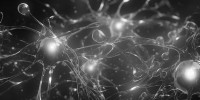
Unlocking Drug Repurposing Potential
In the realm of drug development, the journey from idea to market is often a long and costly one, fraught with challenges. The urgency to find solutions to pressing medical needs has sparked a revolutionary idea: repurposing existing drugs for new therapeutic purposes. This concept not only holds the promise of speeding up the drug discovery process but also offers hope for addressing unmet medical needs. Yet, this approach hinges on a fundamental question: how can we accurately assess the suitability of these drugs for new applications?
Enter DREAM—a powerful tool that ushers in a new era of drug repurposing and combination prediction.
The path to DREAM began with the recognition that successful drug repurposing requires a holistic view of a disease's "druggability." Druggability is the inherent potential of a disease to respond to a particular drug intervention. While several methods exist to evaluate druggability, each has its own limitations. Profile-based, network-based, and structure-based approaches, while valuable individually, often overlook essential aspects of the complex puzzle.
The Birth of DREAM: A Unified Solution
DREAM emerges as a comprehensive solution, designed to integrate various perspectives and methodologies. This remarkable innovation doesn't just fuse mechanisms—it harmonizes them. By combining mechanistic insights and chemocentric principles, DREAM presents an integrated computational workflow that offers an in-depth evaluation of disease druggability.
DREAM's toolkit is a treasure trove for researchers and clinicians alike. With the input of gene expression data, Module 1 of DREAM brings to light genes relevant to the disease. But it doesn't stop there—it builds a co-expression network, providing insights into the intricate web of interactions that drive the ailment.
A Closer Look: The Atopic Dermatitis Case Study
To showcase its prowess, DREAM turns its lens towards atopic dermatitis—a chronic inflammatory skin condition that plagues many. This ailment, marked by dry, itchy, and inflamed skin, is a result of complex genetic and environmental factors. While existing treatments alleviate symptoms for some, a lack of options persists for others. This is where DREAM steps in.
Through transcriptomics data analysis, DREAM paints a comprehensive picture of atopic dermatitis. Co-expression networks, drug mechanisms of action (MOA), and chemical structures fuse into a mosaic that reveals the condition's druggability landscape. Candidates like suramin, risperidone, and metformin emerge as potential game-changers—drugs untested for this purpose, now earmarked for potential repurposing.
 In addition to drugs that are already in use for the treatment of noncancerous skin diseases and that are included in clinical trials, such as caffeine, calcitriol, and calciferol, we identified suramin, risperidone, and metformin as potential candidates for repurposing since these drugs have never been utilized nor tested in the treatment of atopic lesions.
In addition to drugs that are already in use for the treatment of noncancerous skin diseases and that are included in clinical trials, such as caffeine, calcitriol, and calciferol, we identified suramin, risperidone, and metformin as potential candidates for repurposing since these drugs have never been utilized nor tested in the treatment of atopic lesions.
DREAM doesn't just stop at single drugs; it dances into the realm of combination therapy, suggesting intricate pairings that could offer enhanced therapeutic outcomes.
 Moreover, by investigating the structural, functional, and topological characteristics of the drugs included in the study, we derived drug combinations that could be further investigated to improve the therapeutic outcome for atopic dermatitis. Our drug combination prediction led to the identification of 20 combinations composed of 2 drugs, 17 combinations composed of 3 drugs, and 4 combinations composed of 4 drugs for atopic dermatitis.
Moreover, by investigating the structural, functional, and topological characteristics of the drugs included in the study, we derived drug combinations that could be further investigated to improve the therapeutic outcome for atopic dermatitis. Our drug combination prediction led to the identification of 20 combinations composed of 2 drugs, 17 combinations composed of 3 drugs, and 4 combinations composed of 4 drugs for atopic dermatitis.
The Road Ahead: Addressing Limitations and Possibilities
In the world of predictive pharmacology, grand visions often collide with practical limitations. The gap between predictions and clinical reality has been wide, but DREAM aims to bridge it. Traditional approaches have focused either on disease perturbations or drug properties, ignoring vital interactions. DREAM fills this gap with its multi-faceted approach, ensuring comprehensive analysis tailored to the problem at hand.
In Conclusion: The Promise of DREAM
DREAM is not just a package; it's a promise. A promise to propel drug repurposing into uncharted territories, to revolutionize combination therapy, and to forge new paths in therapeutic discovery. With its unified approach, it brings to life a powerful toolset that harnesses the strengths of multiple methodologies. The atopic dermatitis case study is just a glimpse of what DREAM can accomplish. As we navigate the complex landscape of drug development, DREAM stands as a guiding light—a beacon of hope, innovation, and transformative change.